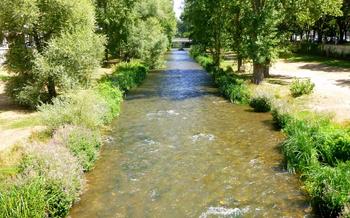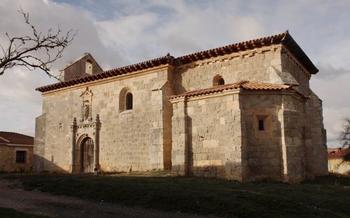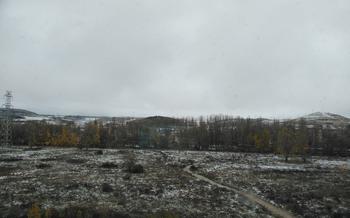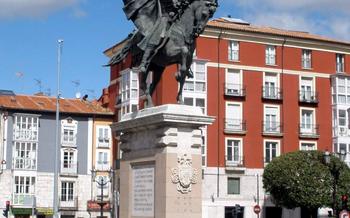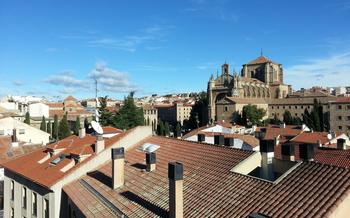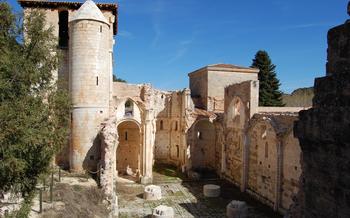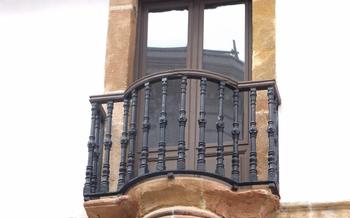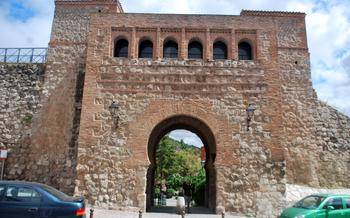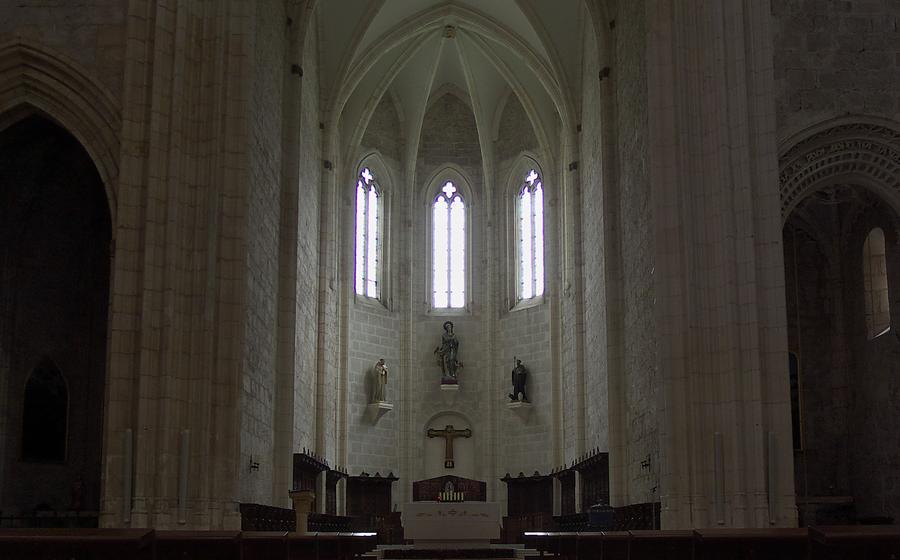
Monasterio de San Pedro de Cardeña
- Monasterio de San Pedro de Cardeña: A Hidden Gem a hidden gem waiting to be discovered—the Monasterio de San Pedro de Cardeña. This ancient monastery, with its rich history and stunning architecture, offers a captivating glimpse into the cultural and religious heritage of Spain.
- Exploring the Architectural Marvels of the Monastery
- Practical Information for Visiting the Monasterio de San Pedro de Cardeña
- The Legendary Connection to El Cid Campeador
- The Monastic Life at San Pedro de Cardeña
- The Monastery's Contribution to the Arts
- The Monastery's Natural Surroundings
- The Monastery's Cultural Events and Activities
- The Monasterio de San Pedro de Cardeña as a Film Location
- Insider Tip: Exploring the Monastery at Sunset
**Monasterio de San Pedro de Cardeña: A Hidden Gem a hidden gem waiting to be discovered—the Monasterio de San Pedro de Cardeña. This ancient monastery, with its rich history and stunning architecture, offers a captivating glimpse into the cultural and religious heritage of Spain.
Founded in the 9th century, the monastery has witnessed centuries of history, serving as a spiritual and cultural beacon. Its architectural style is a harmonious blend of Romanesque and Gothic, showcasing the artistry and craftsmanship of its builders. Inside, visitors are greeted by a serene cloister with graceful arches, leading to the beautifully preserved interior of the church. The monastery also houses a treasure trove of medieval manuscripts, stunning frescoes, and religious artifacts, inviting visitors to delve into its rich cultural and spiritual heritage.
Exploring the Architectural Marvels of the Monastery
A Unique Blend of Romanesque and Gothic Styles
The Monasterio de San Pedro de Cardeña is a captivating blend of Romanesque and Gothic architectural styles, showcasing the transition between these two prominent eras. The Romanesque style, characterized by its rounded arches and robust structures, is evident in the monastery's foundation and early construction. As the monastery evolved, Gothic influences emerged, bringing with them pointed arches, ribbed vaults, and intricate ornamentation. This harmonious fusion of styles creates a visually stunning and historically significant architectural masterpiece.
The Impressive Facade and Its Intricate Carvings
The monastery's facade, a testament to the skill and artistry of medieval craftsmen, is a sight to behold. Its grand entrance, adorned with intricate carvings and sculptures, invites visitors to step back in time and explore the monastery's rich history. The facade's central tympanum, depicting scenes from the life of Christ, is a remarkable example of Romanesque art, while the pointed arches and delicate tracery of the surrounding windows showcase the influence of the Gothic style.
The Serene Cloister with Its Graceful Arches
At the heart of the monastery lies a serene cloister, a tranquil oasis surrounded by graceful arches and slender columns. The cloister's serene atmosphere invites contemplation and reflection, as visitors wander along its covered walkways, admiring the intricate carvings and decorative motifs that adorn the arches and capitals. The cloister's central garden, with its lush greenery and colorful flowers, adds a touch of vibrancy to this peaceful space.
The Beautifully Preserved Interior of the Church
The monastery's church, a testament to the power and glory of medieval Catholicism, is a breathtaking sight. Its spacious interior, characterized by soaring vaults and elegant pillars, creates a sense of awe and reverence. The church's apse, with its intricate ribbed vaulting and stained-glass windows, is a masterpiece of Gothic architecture, while the Romanesque elements in the transepts and nave serve as a reminder of the monastery's early history. The church's beautifully preserved frescoes and paintings, depicting biblical scenes and the lives of saints, add to its spiritual and artistic significance.
Practical Information for Visiting the Monasterio de San Pedro de Cardeña
Location and How to Get There:
The Monasterio de San Pedro de Cardeña is located in the town of Cardeñadijo, about 10 kilometers from the city of Burgos. It is easily accessible by car, and there is ample parking available near the monastery. Visitors can also take a bus from Burgos to Cardeñadijo, which takes about 30 minutes.
Opening Hours and Admission Fees:
The monastery is open to the public from Tuesday to Sunday, from 10:00 am to 1:00 pm and from 4:00 pm to 7:00 pm. Admission to the monastery is free of charge, but donations are welcome.
Guided Tours and Available Amenities:
Guided tours of the monastery are available in Spanish and English. Tours typically last for about an hour and provide visitors with a deeper understanding of the monastery's history, architecture, and cultural significance. Visitors can also explore the monastery at their own pace using a self-guided audio tour. The monastery has a gift shop where visitors can purchase souvenirs, books, and other items related to the monastery's history and culture.
Tips for Making the Most of Your Visit:
- Plan to spend at least two hours exploring the monastery, as there is much to see and learn.
- Wear comfortable shoes, as you will be doing a lot of walking.
- Bring a camera to capture the stunning beauty of the monastery and its surroundings.
- Be sure to visit the Pantheon of the Counts of Castile, the Chapel of the Holy Cross, the Chapter House, and the Library.
- Take advantage of the guided tours or audio guides to learn more about the monastery's history and significance.
The Legendary Connection to El Cid Campeador
The Monasterio de San Pedro de Cardeña is inextricably linked to the legendary Spanish hero, El Cid Campeador. According to tradition, El Cid's wife, Doña Jimena, was buried within the monastery walls. Her tomb, a simple yet poignant monument, has become a pilgrimage site for admirers of the legendary warrior.
The monastery also played a crucial role in preserving the memory of El Cid. In the 13th century, a monk named Pedro de Rada compiled a chronicle of El Cid's life and exploits, known as the "Cantar de Mio Cid." This epic poem, based on oral traditions and historical accounts, immortalized El Cid as a symbol of Spanish heroism and chivalry.
To this day, the monastery continues to honor the legacy of El Cid. Every year, the town of Cardeña holds a festival in his honor, featuring parades, reenactments, and other festivities. The monastery serves as a focal point for these celebrations, drawing visitors from far and wide who come to pay homage to the legendary hero and his enduring connection to this historic site.
The Monastic Life at San Pedro de Cardeña
Nestled withinña has long been a haven for Benedictine monks, who have dedicated their lives to prayer, contemplation, and service. The monastery's daily rhythm is dictated by the Rule of Saint Benedict, a set of guidelines that emphasizes obedience, humility, and community living.
The monks at San Pedro de Cardeña rise early for morning prayers, followed by a period of meditation and study. They then gather for Mass in the monastery church, where they offer their devotions and receive spiritual nourishment. After Mass, the monks engage in various tasks, such as gardening, cooking, and maintaining the monastery grounds. They also devote time to reading, writing, and other intellectual pursuits, contributing to the monastery's rich tradition of scholarship and learning.
In addition to their religious duties, the monks at San Pedro de Cardeña have traditionally played an important role in the surrounding community. They have provided spiritual guidance and support to local villagers, offered education and healthcare services, and contributed to the region's agricultural and economic development. The monastery's self-sufficiency and sustainable practices have served as a model for others, demonstrating the harmonious integration of spiritual and practical life.
The monastic tradition at San Pedro de Cardeña has endured for centuries, despite facing challenges and upheavals along the way. The monks' dedication to their faith and their commitment to living in community have enabled them to preserve the monastery's spiritual heritage and its cultural significance. Their presence continues to inspire and enrich the lives of those who visit and interact with this sacred place.
The Monastery's Contribution to the Arts
The Monasterio de San Pedro de Cardeña was not only a center of religious devotion but also a significant patron of the arts. The Benedictine monks who resided there were skilled craftsmen and artists who created beautiful works of art that have endured for centuries. The monastery's scriptorium was renowned for its production of illuminated manuscripts, which were highly prized for their intricate illustrations and calligraphy. These manuscripts covered a wide range of subjects, including religious texts, historical chronicles, and scientific treatises.
The monastery's artistic influence extended beyond the walls of its scriptorium. The monks were also skilled in other forms of art, such as sculpture, painting, and metalworking. They created stunning sculptures and paintings that adorned the monastery's interior, and their metalwork can still be seen in the monastery's gates and railings. The monastery's artistic traditions had a profound impact on the surrounding region, and many of the region's churches and monasteries were decorated with works of art inspired by the monks of San Pedro de Cardeña.
The monastery's commitment to the arts extended beyond its own walls. The monks also played a role in promoting cultural activities in the surrounding community. They organized festivals, theatrical performances, and musical concerts that were open to the public. These events helped to enrich the cultural life of the region and brought people together from all walks of life. The monastery's contributions to the arts have left a lasting legacy, and its works of art continue to inspire and amaze visitors to this day.
The Monastery's Natural Surroundings
The Monasterio de San Pedro de Cardeña is nestled in a picturesque landscape that enhances its serene atmosphere. The River Arlanzón, a tributary of the Douro River, flows nearby, providing a tranquil backdrop to the monastery. The river's waters have played a significant role in the monastery's history, serving as a source of irrigation for the monks' agricultural activities and contributing to the overall beauty of the surroundings.
The area surrounding the monastery boasts a diverse range of flora and fauna. Visitors can spot various bird species, including eagles, hawks, and owls, soaring above the monastery's rooftops. The surrounding hillsides are covered in lush vegetation, including holm oaks, pines, and junipers, creating a vibrant and colorful tapestry.
The natural surroundings of the Monasterio de San Pedro de Cardeña offer ample opportunities for outdoor enthusiasts. Hiking trails wind through the picturesque landscape, allowing visitors to explore the area's natural beauty and enjoy the tranquility of the surroundings. Birdwatching enthusiasts can indulge in their passion, observing the diverse avian life that calls the area home. The riverbanks provide a serene setting for nature photography, capturing the beauty of the monastery and its natural surroundings.
The Monastery's Cultural Events and Activities
The Monasterio de San Pedro de Cardeña is not only a historical and architectural marvel but also a vibrant cultural hub that hosts a variety of events and activities throughout the year. These events not only showcase the monastery's rich cultural heritage but also contribute to its role as a center of community engagement and education.
One of the highlights of the monastery's cultural calendar is the annual festival in honor of El Cid, held in the town of Cardeña. This festival celebrates the legendary Spanish hero's connection to the monastery and features traditional music, dance, and historical reenactments. Visitors can immerse themselves in the world of medieval Spain and experience the vibrant culture of the region.
In addition to the El Cid festival, the monastery also hosts concerts, exhibitions, and workshops throughout the year. These events showcase the work of local artists, musicians, and historians, providing visitors with a glimpse into the contemporary cultural scene of Burgos. The monastery's beautiful surroundings and unique atmosphere make it an ideal venue for these events, creating a memorable and enriching experience for attendees.
Educational programs and activities are also a key part of the monastery's cultural offerings. Guided tours provide visitors with in-depth insights into the history, architecture, and religious significance of the monastery. Interactive workshops and lectures allow visitors to engage with the monastery's collections and learn about medieval art, history, and spirituality. These educational programs cater to visitors of all ages, making the monastery an ideal destination for families and groups looking for a unique and educational experience.
By hosting these cultural events and activities, the Monasterio de San Pedro de Cardeña plays a vital role in promoting cultural tourism in the region. It provides a platform for local artists and historians to showcase their work, while also attracting visitors from around the world who are interested in exploring the monastery's rich cultural heritage.
The Monasterio de San Pedro de Cardeña as a Film Location
The Monasterio de San Pedro de Cardeña's unique atmosphere and historical significance have made it a popular filming location for films and television shows. Its impressive architecture, serene cloisters, and beautifully preserved interior have provided a stunning backdrop for a variety of productions.
One of the most famous films shot at the monastery is "El Cid" (1961), which starred Charlton Heston as the legendary Spanish hero. The monastery's impressive facade and interiors were used to recreate the grandeur of the medieval Spanish kingdom.
More recently, the monastery was featured in the popular Spanish television series "Isabel" (2012-2014), which tells the story of Queen Isabella I of Castile. The monastery's Chapter House and Library were used to recreate the royal court and the Queen's private chambers.
The monastery's unique atmosphere has also attracted filmmakers from around the world. In 2008, the monastery was used as a filming location for the Bollywood film "Rab Ne Bana Di Jodi," which starred Shah Rukh Khan and Anushka Sharma. The film's director, Aditya Chopra, was drawn to the monastery's "old-world charm and grandeur."
The monastery's role as a film location has helped to promote tourism and cultural heritage in the region. Visitors to the monastery can now walk in the footsteps of their favorite movie characters and experience the same stunning scenery that they saw on the big screen.
Insider Tip: Exploring the Monastery at Sunset
As the sun begins its descent, casting a golden glow across the ancient stone walls, the Monasterio de San Pedro de Cardeña transforms into a place of ethereal beauty. This is the perfect time to explore the monastery's tranquil grounds and soak in its serene atmosphere.
With the crowds of the day gone, you can wander through the cloister, marvel at the intricate carvings on the facade, and find a quiet corner to sit and reflect. The soft light of the setting sun illuminates the monastery's many architectural details, revealing hidden nooks and crannies that might otherwise go unnoticed.
This is also an ideal time for photography enthusiasts to capture stunning images of the monastery. The warm hues of the sunset create a magical atmosphere, casting a golden glow on the centuries-old stone and creating dramatic shadows that enhance the monastery's grandeur.
As darkness envelops the monastery, the peace and tranquility of the surroundings become even more palpable. This is a truly special time to experience the monastery's unique atmosphere and connect with its rich history.
